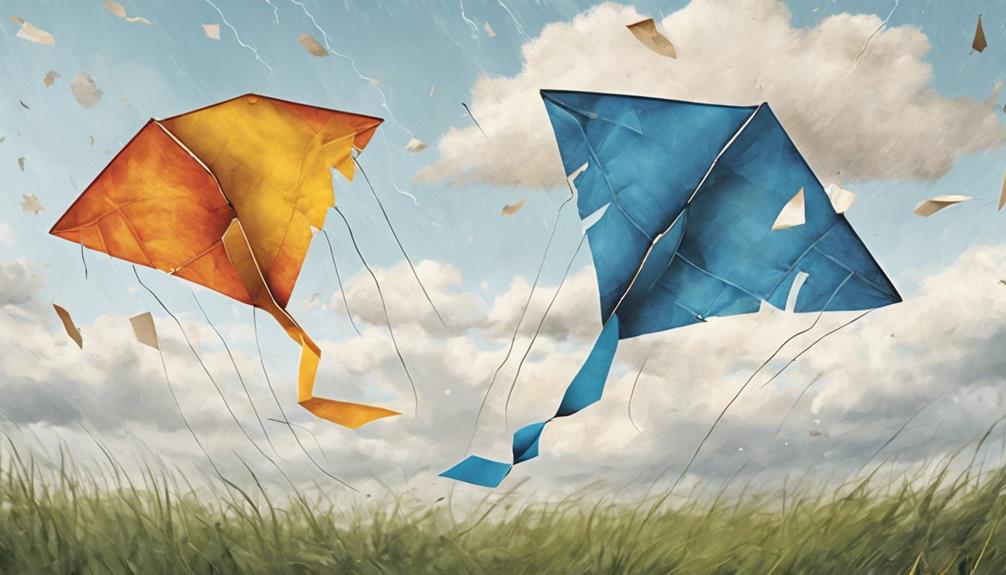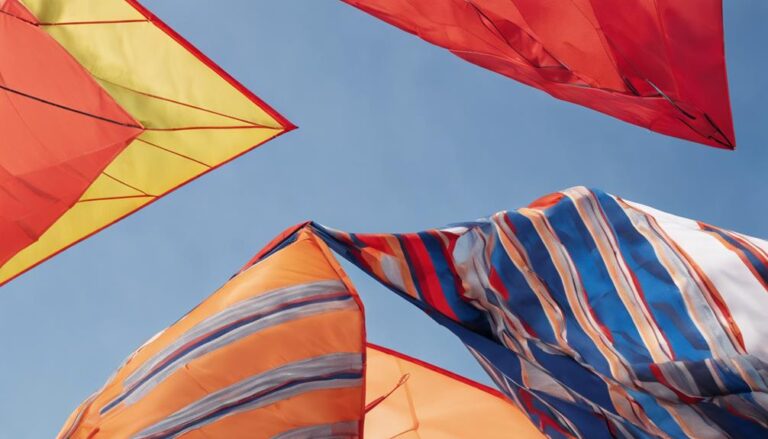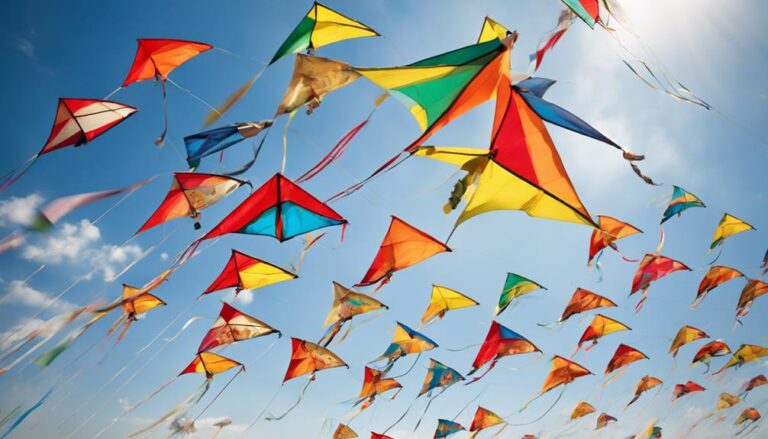In the world of kite-making, not all papers are created equal, or so the saying goes. You’ll find that the type of paper you choose can make or break your kite’s performance in the sky. Whether you’re opting for the lightweight touch of gift wrapping paper or the traditional resilience of tissue sails, each material brings its own set of strengths and challenges to the table.
Now, you might be wondering how these differences actually play out in the air and on the design table. Let’s just say, the right selection could elevate your kite from a mere backyard flyer to a high-flying masterpiece. Why not explore further how these seemingly minor choices can have a major impact on your kite’s journey?
Contents
Understanding Paper Properties
To effectively craft a kite, it’s crucial to grasp the diverse properties of paper. Paper’s weight, strength, and texture directly influence the kite’s performance and longevity. Opting for tissue paper, you’ll need to consider its compatibility with the string, ensuring it can handle tension without tearing.
Analyzing paper types, like robust Washi or delicate tissue, is fundamental for a kite that’s both durable and agile.
Impact on Flight Dynamics

You must consider how the weight of different papers affects lift; heavier papers require stronger wind to achieve lift-off, while lighter ones are more susceptible to changes in wind direction.
The surface texture of the paper impacts drag, with smoother papers reducing air resistance and enhancing flight efficiency.
Additionally, a paper’s flexibility plays a crucial role in stability; more flexible papers can absorb and adapt to turbulent airflows, maintaining the kite’s balanced flight.
Weight Affects Lift
While selecting the appropriate paper for kite making, it’s crucial to understand how its weight directly influences the lift generated, impacting flight dynamics significantly. Factors to consider include:
- Lighter papers facilitate easier lift, essential for adept kite flying.
- Heavier materials demand stronger winds for adequate lift.
- Optimal material choice varies with design and expected wind conditions, underlining weight’s critical role in kite performance.
Surface Texture and Drag
Understanding the impact of paper weight on lift is equally crucial to consider how the surface texture of your kite’s paper influences drag and, in turn, flight dynamics.
Rough textures increase drag, hindering speed and affecting stability. Conversely, smooth textures decrease drag, facilitating swifter, smoother movement through the air.
Selecting the appropriate surface texture optimizes performance, crucial for achieving desired handling and responsiveness in various wind conditions.
Flexibility Influences Stability
The flexibility of the paper used in kite construction plays a pivotal role in determining the kite’s stability during flight, directly impacting its flight dynamics.
Flexible papers like tissue adjust to wind currents, offering nuanced control but may compromise stability.
Stiffer papers enhance stability, and resist deformation but can reduce maneuverability.
Optimizing flexibility is key to balancing stability with responsive flight behavior in varied wind conditions.
Durability and Weather Resistance

You’ll find that various papers’ durability directly affects your kite’s lifespan, with materials like Mylar and hand-made kite paper standing out for their resilience.
Weather-resistant papers are key to combating environmental elements, ensuring your kite withstands conditions like rain and wind without sustaining damage.
Understanding material strength factors allows you to select the optimal paper, enhancing your kite’s ability to endure outdoor challenges over time.
Enhancing Kite Lifespan
Selecting durable kite papers like Mylar or hand-made Japanese varieties significantly enhances the lifespan and weather resistance of your kite. When you dive into kite making, consider these factors to ensure your kite flies higher and longer:
- Laminated traditional paper layers increase durability.
- Materials like Mylar offer superior weather resistance.
- High-quality papers withstand varied outdoor elements, making your kite more resilient.
Combatting Environmental Elements
Understanding the resilience of various kite-making papers against environmental challenges is crucial for crafting durable, weather-resistant kites. Mylar and Cellophane, known for their weather resistance, alongside traditional laminated kite paper and Japanese mulberry paper, enhance durability. These materials combat environmental elements effectively, ensuring long-lasting kites.
Selecting the right paper is pivotal for kite longevity, emphasizing the importance of durability and weather resistance in kite-making.
Material Strength Factors
After exploring how various materials combat environmental elements, it’s crucial to examine the specific factors of material strength, such as durability and weather resistance, that significantly impact kite performance.
Consider these factors:
- The resistance of kite paper to tearing enhances its durability during flight.
- Weather-resistant materials like Mylar or Cellophane endure challenging conditions.
- Traditional and handmade papers offer a balance of strength against weather elements and durability.
Aesthetic Considerations
When considering the aesthetic appeal of your kite, the choice of paper plays a pivotal role, offering a wide spectrum of colors and patterns that significantly enhance its visual attractiveness.
Different papers can profoundly affect the kites’ overall look, introducing varied visual interests. From decorative to themed papers, each selection personalizes and elevates the kite’s design, making kinds of kites not only unique but also visually striking through textures and finishes.
Choosing Paper Based on Kite Types

Selecting the appropriate paper for your kite, based on its specific type, is crucial for enhancing both performance and durability. Understanding the characteristics of various papers ensures you choose the right material for different kite styles.
Here’s why:
- Lightweight papers like tissue or rice paper are ideal for traditional high-flying kites.
- Gift wrapping paper suits quick, modern designs prioritizing ease of construction.
- For making ripstop nylon kites, heavier, more durable materials are essential to withstand conditions when you Fly a Kite.
Environment and Safety Factors

Considering the environmental and safety factors is crucial in choosing the right papers for kite making, as it significantly affects both the ecosystem and the health of the individuals involved.
Opting for environmentally friendly, non-toxic papers, like those recycled or biodegradable, ensures a reduced ecological impact.
Sustainably sourced papers, with low chemical emissions and free from harmful substances, support both responsible forestry and safer kite-making practices.
Conclusion
In conclusion, the paper you choose for your kite profoundly affects its performance, durability, and appearance. Understanding the properties of various papers, from their weight to their strength, is crucial in determining how well your kite will fly and withstand weather conditions.
Opt for materials that align with the specific design and purpose of your kite, considering both aesthetic desires and functional needs. Remember, your selection impacts not just the kite’s flight dynamics but also its environmental footprint and safety.






